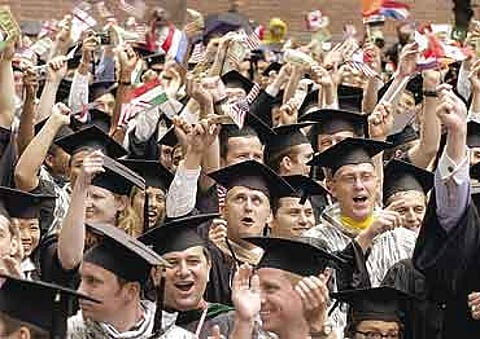Despite the overwhelming criticism of business education in the US media, leading American schools have been experimenting with innovative pedagogies and approaches to develop mindsets and competencies relevant for the students’ role as managers and future leaders. Knowledge from the humanities and social sciences is used to develop managerial competencies through dynamic, experiential learning methods. Relatively speaking, Indian schools have a lot of ground to cover before they attain the stature of leading US schools. Part of the responsiveness of American schools to the stakeholder requirements has come about owing to industry feedback, which have been seriously addressed.
Listen To The Westwind
Indian B-schools, with their entrenched curricula, spawn fewer leaders. Why not take a page out of the American book, focusing on all-round personality development?
Faculty at some leading American schools have the flexibility to explore and experiment, to try out new ways and approaches. They are trying out means to deliver content in a holistic fashion—for example,WSOM radically scrapped some traditional courses and added new ones like ‘How to start a business’ and ‘Running a business’.
It was exciting to experience the use of theatre to teach ethics and leadership. At the Darden Business School, students participated in writing, enacting and directing plays, something which aids them in getting close to the core issues of leading, managing teams as well as providing self-insight. Its merit as a tool to stimulate the thoughts, emotions of graduates is immense. Theatre appears to serve another purpose too, that of activating the imagination as well as involving the complete human being—the analytical, emotional and value-level aspects. Interactive theatre is another highly engaging, yet deeply thought-provoking approach to teach difficult themes like leadership and ethics.Theatre appears to bring people face-to-face with their own value-level dilemmas, forcing them to ask questions of themselves. At Darden, literature is also a tool in this. In fact, great novels serve like case studies for students to analyse and learn about people and about life in an interesting and unforgettable fashion. It must be mentioned here that a couple of Indian schools do use theatre and literature as pedagogical tools but in a rather limited fashion.
Shaping leaders has become a strong agenda for top US schools, they don’t merely mention it on their websites or brochures. The proof lies in the curriculum—the students get the opportunity to undergo core courses on leadership, where experiential learning methods are utilised to help students get insight about themselves. Case Western (WSOM) has, over the last decade, taken the lead in shifting focus from teaching to learning, under the leadership of Richard Boyatzis. They spend one term sensitising students to interpersonal and team skills as well as leadership styles using experiential exercises and techniques. Students get extensive feedback, and opportunities to develop themselves on various competencies.
At Wharton (one of the earliest schools to offer a business education programme), the students undergo a core course on leadership with the class divided into units of 30.Michigan Ann Arbor (Ross School of Business) and Harvard also do leadership development, albeit in a rather piecemeal fashion. At Michigan (otherwise a highly research-based school), students undergo a two-week course to sensitise them to leadership and interpersonal skills and provide insight on their competencies. The course is designed and delivered by leading luminaries like Noel Tichy and Robert Quinn.

There are two major differences between Indian and American schools. Alumni of the latter (unlike their Indian counterparts) contribute generously to the coffers which goes a long way in supporting research in the schools. This aids schools to focus on cutting-edge research and ‘pushing the frontiers of knowledge’. They are able to attract the best talent to their schools and provide them the resources for knowledge-building and dissemination; in India, it is a matter of anguish that many join the teaching profession as a last option. Needless to say, this is bound to lead to second-grade faculties. Students come to US schools with an average of 5-7 years of work experience while, in India, the schools get students with 1-3 years of experience. This is dictated not only by the market but also by the attitude of recruiters who seem to prefer younger students with less work experience.
Comparison of students in B-schools across both the countries also brings out some differences: American students get a strong grounding at the high school level in communication, presentation, personality development; Indian students get very little exposure of this kind, if at all. In addition, students who rank high on admission exams like the cat spend gruelling time working hard in preparation, with little time spent on all-round personality development. It has been the observation of leading corporate sector executives that they are very bright students, but lack ‘personality’. This is perceived as a stumbling block since Indian students need to be groomed for a couple of years before they learn the ways and means of interacting and influencing people. In fact, according to the director of a leading multinational bank, "while our students stand out for their intelligence in the global pool, few are able to become leaders".
India is going global and B-schools here should make it their goal to develop leaders for the world, rather than being mere suppliers of talent. They have a huge task ahead of them to shape future leaders, not merely through the cognitive inputs but also through developing the human being.
(The author holds the Chair, PGP, HR, at MDI, Gurgaon)
Tags